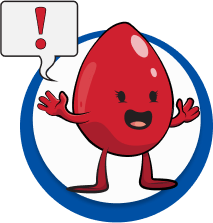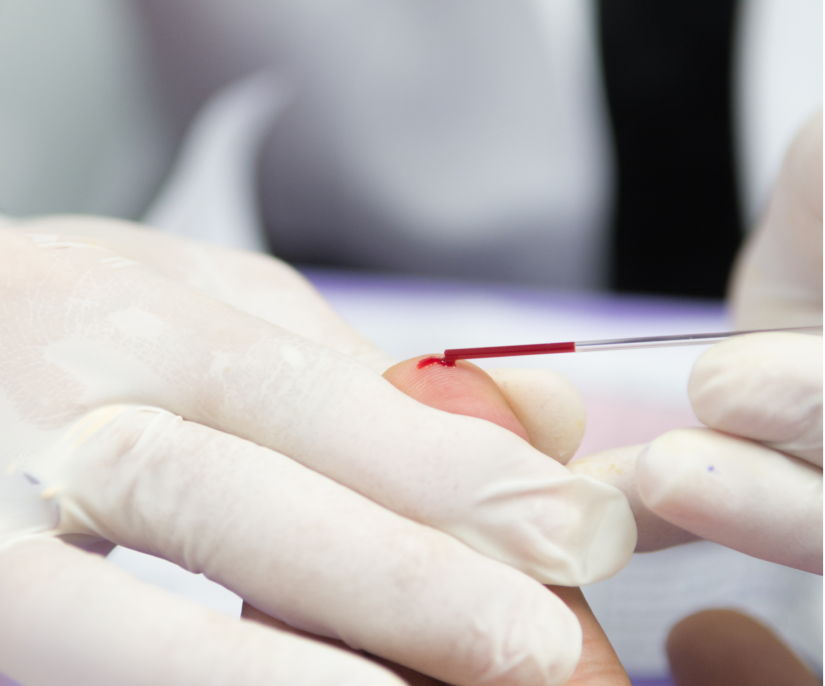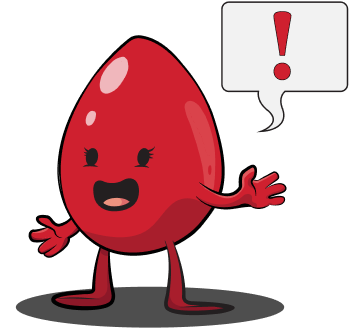Don't be “mislead". Know the facts about lead exposure.
Lead exposure
The impact of lead poisoning on children
Lead is one of the most prevalent environmental health risks for children, with lifelong repercussions. Symptoms are not usually apparent and can mimic other everyday ailments like a headache or the flu. Even small quantities of lead in the bloodstream can affect a child’s learning capabilities, attention span and academic performance.
A blood test is the only way to diagnose lead exposure; followed by actions to mitigate the effects. The source of lead exposure should be quickly identified and the child should be isolated from it as soon as possible.
One of the key pieces to fighting this silent poison is creating more awareness for families ― empowering them to understand where lead lurks in the environment and to ask to get their children tested without depending on someone to tell them they’re at risk.
It only takes this much lead to poison a child.
There is NO safe level of lead in the blood.
Sources of lead exposure
Most children are exposed to lead from paint in homes built before 1978.1
1 in 4 children live in a home old enough to have lead paint.2
It’s more than lead paint.
30% of children are exposed to lead by additional sources.3
Possible lead exposure sources include:
Windows and Doors

A home, school, or daycare built before 1978 may have lead paint on the windows, trim, etc. When the paint peels and cracks, it creates harmful lead dust, which can be inhaled by little ones in your household.
Toys and Jewelry

Lead can be found in imported and antique toys, costume jewelry and trinkets.
Drinking Water

Older plumbing may contain lead which can contaminate tap water.
Pottery

Imported, old, and handmade pottery may have been made with leaded glaze.
Soil

Soil near busy streets or pre-1978 buildings can contain high lead concentrations.
Hobby / Work

A hobby or job can bring home lead dust on shoes and clothing (examples include: hunting, fishing, shooting, construction work, remodeling, welding, auto repair, etc.).
Routes of exposure
Both adults and children can become exposed to lead through occupational and environmental sources
- Ingestion of lead-contaminated dust, water (from leaded pipes), and food (from lead-glazed or lead-soldered containers).
- Inhalation of lead particles generated by burning materials containing lead, for example during smelting, recycling, stripping leaded paint, and using leaded aviation fuel

Don’t be “mislead” about lead…
Learn how a simple blood lead test at your child’s next pediatrician’s visit can provide answers.
Learn about Lead
The impact of lead on little ones
Many lead-poisoned children do not show any signs of exposure. If gone undetected, lead may cause:
- learning delays
- damage to a child’s body, including brain, kidney, and nervous system
- hearing loss
- hyperactivity and behavior challenges
- delayed growth and development
- lower IQ and lower achievement in school
- seizures
- death
Why is having my child’s lead level test so important?
When it comes to lead exposure, it’s best to test. Children should be tested at ages 1 and 2 ― two tests by 2 years old, or “2 by 2.” The first step in addressing an elevated blood lead level is to find and remove the source of exposure. The longer a child is exposed, the more damaging and lasting the effects can be. In most cases, the only way to know if your child has been exposed is to get a blood lead test performed. These lead level tests are routinely done during a child’s wellness visit and most insurance providers cover the cost.
How do I know if my child has been exposed?
A blood lead test is the only way to know if your child has been exposed to lead.
- Children enrolled in Medicaid are required to get tested for lead at ages 1 and 2 or up to the age of 6 if they have no record of ever being tested.
- For children not enrolled in Medicaid, the CDC recommends focusing testing efforts on high-risk neighborhoods and children. These include children who:
- live or spend time in a house or building built before 1978
- are from low-income households
- are immigrants, refugees, or recently adopted from less developed countries
- live or spend time with someone who works with lead or has hobbies that may expose them to lead

How is the testing performed?
A blood test can be performed at the doctor’s office, local health department, clinic, or hospital. A healthcare provider will test a child’s blood for lead. A small amount of blood is taken from the finger, heel, or arm and tested for lead during a blood lead test.
A finger-prick (capillary) sample is usually the first step to determine if a child has lead in their blood. A finger-prick test that shows a blood lead level at or above the CDC’s blood lead reference value is usually followed by a second test to confirm it.
A venous blood draw takes blood from the child’s vein. It may take a few days to receive results from the laboratory. A healthcare provider may order a venous blood draw to confirm the blood lead level seen in an initial capillary test.
Frequently asked questions about lead exposure
What is lead?
Lead is a naturally occurring metal used in various products and materials. Exposure to lead, even in small amounts, can affect multiple body systems and be particularly harmful to young children.
How does lead exposure occur?
Lead exposure occurs when someone inhales lead-containing fumes or dust or swallows something that contains lead. Lead-based paint and lead-contaminated dust are the primary sources of exposure for U.S. children. Despite significant progress, lead poisoning remains a top childhood environmental health problem. (Source: Healthy Homes)
Is there any safe level of lead?
No level of lead in the blood can be defined as safe. An advisory panel of the CDC now recommends that children with blood levels as low as 3.5 μg/dL be identified as having elevated levels and be monitored. Even such low levels may harm a child’s cardiovascular, immunological, and endocrine health, with consequences for that individual and overall public health. While the effects of lead appear to be irreversible, eliminating lead exposure can reduce further damage.
Why are children especially vulnerable?
Toddlers and young children explore with their hands and frequently put them in their mouths. As young children crawl on the floor and reach windows, railings, and walls, they may inhale dust from peeling and chipping lead-based paint or ingest paint chips.
Furthermore, children under six years of age are biologically more sensitive to lead due to rapid brain and organ development, when the body readily takes up lead—mistaking it for calcium. Therefore, children who are low in calcium or have iron-deficient anemia may have an ever-greater lead uptake.
Are adults affected by lead poisoning?
Adults can become lead poisoned, most frequently from the workplace and hobbies. Lead in adults can affect the central nervous and gastrointestinal systems and can cause chronic kidney disease as well as other health problems.
What can I do to prevent lead poisoning?
The best way to prevent lead poisoning among young children is to remove the lead source. To prevent exposure, especially in homes built before 1978, the CDC recommends:
- Contact your local health department about testing paint and dust from your home.
- Ensure a child cannot access peeling paint or chewable surfaces painted with lead-based paint.
- Create barriers between children and lead sources until clean-up is complete.
- Regularly wet mop floors, damp sponge walls, and all horizontal surfaces and vacuum with a high-efficiency particulate air vacuum (HEPA vac). Cleaning is a temporary solution until the lead can be completely removed.
- Pregnant women and children should avoid pre-1978 homes if a renovation is underway.
- Regularly wash children’s hands, especially before eating.
- Regularly wash children’s toys.
- Prevent children from playing in bare soil, opting for sandboxes or planting grass. This is especially true of areas that are within one block of a major highway or busy street, as lead that was once in gasoline may have accumulated in the soil.
- Give your children foods that are high in calcium and iron, such as meat, beans, spinach, and low-fat dairy products. This can help reduce the amount of lead absorbed by the body.
Source: https://www.cdc.gov/nceh/features/leadpoisoning/index.html
References:
1. The Centers for Disease Control and Prevention (CDC) estimate that 29 million housing units have deteriorated lead paint and elevated levels of lead-contaminated house dust – about 1 in every 3 U.S. housing units may have lead paint hazards.
2. Levin R. Lead Exposures in US Children, 2008: Implications for Prevention. Env. Health Perspect.2008;116(10):1285-93.
3. Brown, M.J. (2012). Lead in Drinking Water and Human Blood Lead Levels in the United States. Morbidity and Mortality Weekly Report, August 10 Supplement, 61, 1-9
Stay in the loop
Complete the form below to request more information.
